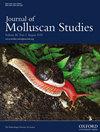琵琶湖及周边地区淡水螺属 12 个物种的性别比例偏差很大
IF 1.2
4区 生物学
Q2 MARINE & FRESHWATER BIOLOGY
引用次数: 0
摘要
大多数生物的性别比例几乎相等,而一些生态和进化因素却使性别比例发生偏移。我们评估了琵琶湖及其周边地区淡水螺属 Semisulcospira 中 12 个物种的性别比例。我们发现所有 12 个物种的性别比例都高度偏向雌性。在较小的贝壳大小等级中,性别比例几乎相等或略微偏向雌性,而在较大的贝壳大小等级中,性别比例则高度偏向雌性。我们还发现,在大多数物种中,雌性个体明显较大。此外,雌雄个体大小差异较大的物种往往表现出更偏向于雌性的性别比例。考虑到贝壳大小与年龄之间的普遍相关性,这种模式可以解释为雌性寿命较长,从而形成了观察到的雌性偏多的性别比例。我们还发现,一些半滑舌鳎物种在所有贝壳大小等级中都表现出雌性偏多的性别比例。这种模式表明,不同寿命假说并不能完全解释所观察到的性别比例偏差。我们讨论了取样误差和自私的遗传因子对观察到的性别比例偏差的可能贡献。本研究为厘清半滑舌螺性别比偏倚的机制提供了重要信息。本文章由计算机程序翻译,如有差异,请以英文原文为准。
Highly biased sex ratios in the twelve species of the freshwater snail genus Semisulcospira in and around Lake Biwa
The sex ratio is nearly equal in most organisms, while several ecological and evolutionary factors skew the sex ratio. We evaluated the sex ratios of 12 species in the freshwater snail genus Semisulcospira in and around Lake Biwa. We found highly female-biased sex ratios in all 12 species. The sex ratios were nearly equal or slightly female-biased in the smaller shell-size classes, while they were highly female-biased in the larger size classes. We also found that females were significantly larger in most of these species. Further, the species with a larger size difference between the sexes tended to exhibit a more female-biased sex ratio. Considering the general correlation between shell size and age, this pattern can be explained by longer lifespans in females, shaping the observed female-biased sex ratios. We also found that some Semisulcospira species showed female-biased sex ratios in all shell size classes. This pattern suggests that the distinct longevity hypothesis can not solely explain the observed biased sex ratios. We discussed the possible contributions of the sampling errors and selfish genetic elements to the observed biased sex ratios. This study provides essential information to disentangle the mechanisms of the biased sex ratio in the Semisulcospira snails.
求助全文
通过发布文献求助,成功后即可免费获取论文全文。
去求助
来源期刊

Journal of Molluscan Studies
生物-动物学
CiteScore
3.00
自引率
8.30%
发文量
36
审稿时长
3 months
期刊介绍:
The Journal of Molluscan Studies accepts papers on all aspects of the study of molluscs. These include systematics, molecular genetics, palaeontology, ecology, evolution, and physiology. Where the topic is in a specialized field (e.g. parasitology, neurobiology, biochemistry, molecular biology), submissions will still be accepted as long as the mollusc is the principal focus of the study, and not incidental or simply a convenient experimental animal. Papers with a focus on fisheries biology, aquaculture, and control of molluscan pests will be accepted only if they include significant advances in molluscan biology. While systematic papers are encouraged, descriptions of single new taxa will only be considered if they include some ‘added value’, for example in the form of new information on anatomy or distribution, or if they are presented in the context of a systematic revision or phylogenetic analysis of the group.
 求助内容:
求助内容: 应助结果提醒方式:
应助结果提醒方式:


